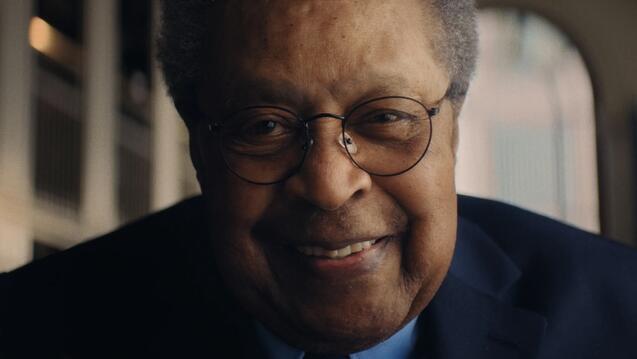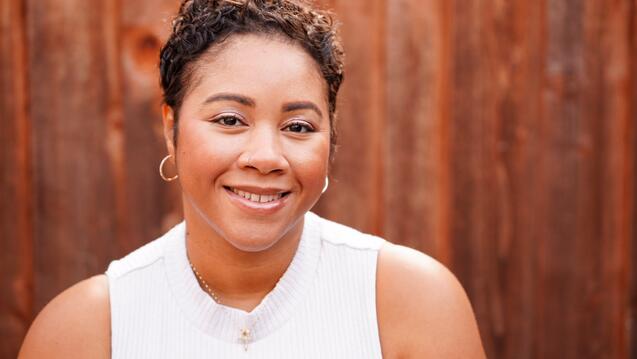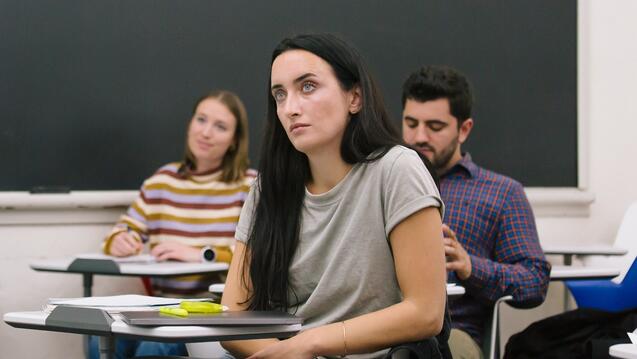Conservation Practices Take Root Across Campus
Solar energy, aggressive recycling, and a commitment to reusing old materials are just a few of the practices fueling a campus-wide movement toward conservation and alternative energy use.
The biggest move is an investment in solar powered energy. In an effort to beat rising energy costs, USF installed roughly 12,000 square feet of photovoltaic fuel cells late last year on the roof of Gleeson Library/Geschke Center, providing enough solar energy on a sunny summer day to power half the building, said Glenn Loomis, assistant vice president of facilities management. The university has plans to add photovoltaic panels on four more roofs over the next several years. Photovoltaic cells are treated surfaces made of silicon that create an electrical field when struck by sunlight. The created current can then be fed into the campus's electrical grid.
"Five (total) rooftops could provide 25 percent of the campus's electricity," Loomis said. "That kind of power could dramatically reduce energy costs." He added that the university also uses solar heated rooftop water pipes to heat 50 percent of the water used in the residence halls.
In addition, campus construction is providing an unprecedented opportunity to build "green." The Kalmanovitz Hall rebuilding, for example, will emphasize recycling materials from the old Campion into the building's new interior whenever possible, such as the reuse of concrete and steel pieces or old light fixtures. The new interior will be designed to conserve energy and will be powered by USF's 17-year-old co-generation plant, which uses natural gas for power and reuses the heat created as a byproduct to warm the Koret Health and Recreation Center pool and the residence halls. Plans also call for the proposed new wing of the Harney Science Center to use only sustainable sources of heating and cooling, Loomis said.
Meanwhile, the university's recycling program has expanded to the point that half of the campus's waste is recycled, said Joe Murphy, environmental safety manager. The university also composts landscaping waste, recycles used motor oil and fluorescent light tubes (which contain mercury), and is looking to dispose of combustible waste from the university's kitchens in World Fare.
Another effort is being made in the residence halls, where Kristy Vivas Clemmons, assistant director for facilities and operations, has coordinated efforts to recycle and reuse residence hall materials whenever possible. Bins in the residence halls' laundry rooms, for example, encourage students to donate their old clothing or contribute food or even old art supplies to nonprofit distribution centers in the city. Since August, Vivas Clemmons said she has collected 100 bags of clothes and shoes, 15 bags of food, and 120 pounds of art supplies. Together with Susan Davison, associate director of facilities management, Vivas Clemmons has also coordinated delivery of old campus furniture to new homes in the city, including donating old residence hall mattresses to a nonprofit refurbishment center. Vivas Clemmons also researched and bought recyclable carpet from a Georgia mill, which she toured to guarantee the carpet was made of sustainable materials.
"We have a lot of people in the office who have started thinking in terms of sustainability," she said. Part of that campaign includes having the residence hall directors and senior staff sign a statement committing to sustainability.
"It requires them to dispose of materials in a responsible manner," Vivas Clemmons said. "We have expectations of them to continue with this philosophy and mindset throughout their job. We try to relate it to USF's mission of social justice."


